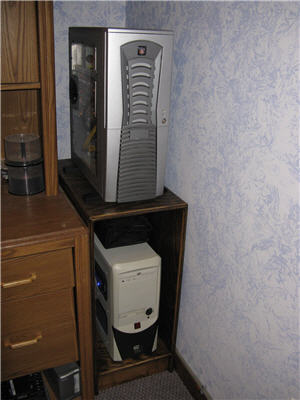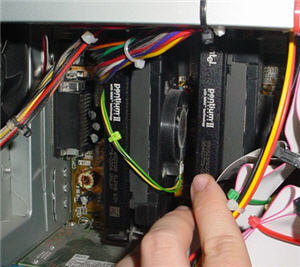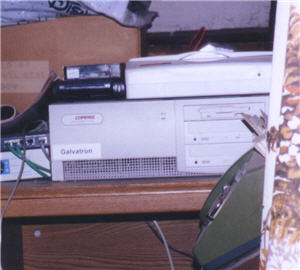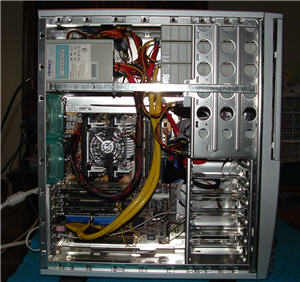
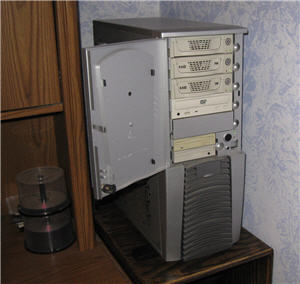
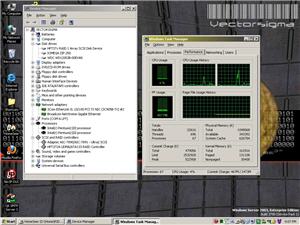
Click here to see the desktop full screen!
|
Server Name: Vectorsigma
OS: Windows 2003 Enterprise
Built in 2005
Specs:
- Dual Pentium III
Note: Due to cost, the CPUs used are 1Ghz CPUs, but since the system board does not support a 133Mhz FSB, these
CPUs are under clocked and running at 750Mhz.
- 512MB RAM
- Highpoint Rocket RAID, hosting dual 120GB IDE Drives running RAID 1
- Stand Alone 120GB drive (used to store Shadow Copies)
- IDE Mobile Racks (for easy install and removal of hard drives)
- 250MB IoMega ZIP Drive
- 3Com 3C905-B NIC
- BroadCom NexXtreme 5700 NIC
When I built this server, I moved from a Windows 2000 ADS to a Windows 2003 ADS. Since I kept the same ADS I started
a few years back and I was moving to 2003, I had to upgrade the Schema for my ADS. Once the Schema was updated and
I could promote this server as a Domain Controller, I then transfered the FSMO roles to this new machine).
This machine does in fact run two network interfaces. Prior to me upgrading my home LAN to gigabit, both NICs used
to be 3Com 3C905-B's. The purpose behind this was bandwidth. When I built this server, it was the only
one in my environment, so it ran everything (and still today runs almost everything). Since I also run software
on this server to stream music to MP3 receivers in my home (that receive via a LAN connection), I was concerned the outgoing
bandwidth would bog the system down. This was an attempt at trying to manually "load balance". Both NICs
are linked to the same subnet, but I have designated different services to run off each one. I only upgraded one NIC to
gigabit to increase bandwidth for file transfers (but things like the MP3 streaming is still done via the other NIC).
Granted, today if I upgraded the second NIC to the same Broadcom card, I could configure teaming, but since this seems to be
working, I am leaving well enough alone for now.
|
